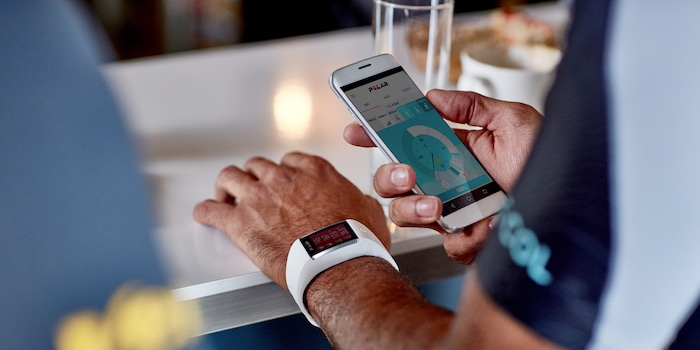
Understanding and interpreting the data on your sports watch
A few months ago, I bought my first sports watch. I wore it a few times during training and looked at the stats afterwards. That was the big question mark - I simply couldn't interpret some of the data my watch was delivering. Which data is good and which not so good? I did a bit of research.
So far, I've used my Tom Tom Spark Cardio to go running and work out at a gym. Some of the measurement values are very clear, such as tempo and calories burned. For example, I had difficulty correctly interpreting my step rate value or my heart rate zones.
Steps per minute
On my last jog, my step rate was 152. Impossible to say what this means. After doing some research, I know that this value is too low and that I'm not running efficiently. A top-level runner manages around 180 steps/minute, whereas for an amateur jogger, 160 to 170 steps/minute is already not bad at all.
So I need to improve my step rate, but how? I've found some advice on this and will put the following into practice: I create a playlist containing songs with 160-180 beats per minute and I'll try to run to the beat. If that doesn't work, because I'm already at the end of my tether after a few minutes, I go to plan B: I start a split workout and try for 1 minute to reach the highest possible step rate. I follow this with 2 minutes of slow running and repeat the operation 4 to 8 times.
Heart rate zones
From your maximum heart rate, sports watches define 5 heart rate zones and always divide them according to the same principle, so that they are easier to understand. On my TomTom Spark, these zones have the following names, for example: [[image:6648768]]
As I'm training to reduce my relatively high body fat (where could that have come from?), I now know that, as well as building muscle, I need to train zones 1 and 2 in particular. As part of my research, I discovered that TomTom makes training programmes available for achieving different sporting goals.
I'm really pleased with my sports watch, because compared to before, I train more effectively. If I wanted to go even deeper into analysis, I have to face facts, the TomTom wouldn't be enough. Other relatively expensive watches are capable of measuring other interesting values for training. I've put together a few of them here for you.
Vertical movement
This technique is extremely important for ambitious runners: they use it to get the most out of every race. When you watch the professionals, you notice that their torso barely moves when they run. This is mainly to do with efficiency - they spend as little energy as possible on unnecessary movements. A typical value for vertical movement is between 6 and 13cm, but professionals have even lower values.
A watch that can measure this value: [[productlist:5766271]]
Orthostatic test
This test analyses your body's ability to recover from regular intensive training. The results can be used to improve your training programme. During the test, your heart rate and its variability are measured when you lie on your back, when you stand up and when you stand up. These values are ideal for detecting disorders of the autonomic nervous system, such as exhaustion or overtraining. In addition to physical exhaustion linked to training, the test results can also be influenced by other factors, such as stress.
Watches that can measure these values: [[productlist:2733482,5676405]]
VO2max
This value indicates the flow of oxygen consumed by the body, per minute and per kilo of body weight during intense effort. The higher it is, the more oxygen your body is able to supply to your muscles - for a longer, more intensive workout. For accurate results, it's best to carry out the tests in a laboratory. Sports watch manufacturers use intelligent algorithms to estimate this value. VO2max is calculated on the basis of heart rate measurements and recent training sessions. Which is good: this value can be improved by training.
Watches that can measure these values: [[productlist:3230668,2733482,5766271]]
This value can also be measured with all Suunto Ambit and Spartan models, thanks to the movescout app.
Lactic threshold
Those who know their lactic threshold (also known as anaerobic/aerobic threshold) are able to define the intensity of their training and know when they need to put in more effort. It defines the upper load range, when oxygen supply and oxygen demand in the body's cells are in balance. If you exceed this range, you will tire very quickly, because the oxygen supply is no longer high enough to cover your energy needs. The higher the lactic threshold, the faster you run, for example in a marathon. It is positively dependent on VO2max.
A watch that can measure this value: [[productlist:5636933]]
Seaside child. Close to nature. Dog lover.